|
What's the best draft class of all time? If you asked a football fan to identify the best draft pick ever, it would take about two seconds to point to Tom Brady as the 199th pick of the 2000 draft. Likewise, if you asked someone which team had the best single draft in league history, they would probably point to the 1974 Steelers and their four Hall of Famers, although the 1971 class might actually be better. In terms of positions, though, the only positional class most fans know by heart is the famous quarterback class of 1983, which produced three Hall of Famers in the first round. In preparing for this year's draft and what is reportedly an incredible crop of defensive linemen, I started to wonder about those positional classes. If that's the best year for quarterbacks in draft history, what's the best running back or offensive line class? And what was the most productive draft year in league history? I went ahead and built a simple, admittedly arbitrary stat to try and calculate that figure. Using pro-football-reference.com's database, I went through each draft pick since the AFL-NFL merger for 1970 and awarded them a draft score, with one point for every year as a starter, four points for a Pro Bowl berth, eight points for a first-team All-Pro nod, and a 40-point bonus for making the Hall of Fame. I preassigned Hall of Fame nods to absolute locks for Canton like Brady and J.J. Watt to try to get an accurate read of more recent drafts, and after evaluating each class by the numbers, I tried to apply common sense to sort through close calls. I treated a seven-time Pro Bowler at receiver as more valuable than a seven-time Pro Bowler who was listed at receiver but made it to Hawaii for special teams, because the league also values the offensive/defensive player as more important. For each positional group, I'll list my pick for the top three draft classes going back through 1970. I'll also include a recent draft class that might have a shot at challenging for legendary status, and I'll also throw in the worst class over that same time frame for good measure. Since we don't know much about how the past few classes will turn out, I'll generally leave them out. Jump to a position:
QB | RB | WR | TE
OL | DL | LB | DB
Best overall classes
QUARTERBACKThird place: 1998The '98 draft was led by a pair of quarterbacks who went in very different directions, of course, in Peyton Manning and Ryan Leaf. Manning's presence as an inner-circle greatest quarterback of all time candidate makes him the focal point of this class, which yielded a second long-term starter, Packers draftee Matt Hasselbeck. Two starters might not seem like a great haul, but when one of those two is as good as Manning, it rates out as superior to deeper classes like 2005 (Aaron Rodgers, Alex Smith, Jason Campbell, Ryan Fitzpatrick) and 1973 (Dan Fouts, Ron Jaworski, Joe Ferguson, Bert Jones). Pats fans will wonder about the 2000 class, where Brady came off the board at 199, but guys like Chad Pennington and Marc Bulger didn't have the longevity to compete with Hasselbeck. Second place: 2004Nine quarterbacks in NFL history have thrown at least 7,000 passes. Three of them were drafted among the first 11 picks in 2004. Looking back, I don't think we would argue that Eli Manning (first overall) turned out to be a better pro passer than Philip Rivers (fourth) or Ben Roethlisberger (11th), but this is just about the platonic ideal for teams that draft a quarterback in the first round and hope to find a guy they can stick in the lineup for 15 years. Matt Schaub pieced together a run as a starter with the Texans after being drafted by the Falcons in the third round, too.  First place: 1983This should surprise exactly nobody. There's a chance the 2004 class could eventually send three quarterbacks to Canton, although Roethlisberger seems to be the only sure thing to make it to the Hall of Fame. The '83 draft already has three legendary quarterbacks enshrined in John Elway, Jim Kelly and Dan Marino, who combined for 23 Pro Bowl appearances. Ken O'Brien spent seven years as the primary starter for the Jets, marking a fourth valuable player drafted in the first round. Todd Blackledge and Tony Eason didn't reach lofty heights, but Eason was still good enough to start a Super Bowl. Class to watch: 2016The 2018 draft produced five first-round quarterbacks for only the second time since that legendary 1983 class, and the 2017 draft has already produced one MVP season from Patrick Mahomes. But the top three quarterbacks from 2016 -- Jared Goff, Carson Wentz and Dak Prescott -- have combined for five Pro Bowl nods in three years. The 2012 class will also have four Week 1 starters in Andrew Luck, Russell Wilson, Nick Foles and Kirk Cousins. Sandwiched between Luck (first overall) and Wilson (75th), teams drafted Robert Griffin (second), Ryan Tannehill (eighth), Brandon Weeden (22nd), and Brock Osweiler (57th). This stuff is hard. Worst class: 2013I like to give more recent classes a chance to develop before putting them in historical perspective, but I think we're about ready to close the door on the 2013 QB room. Only one quarterback was taken in each of the first three rounds, and they combined for four years as starters: two from second-rounder Geno Smith and one each from first-rounder EJ Manuel and third-rounder Mike Glennon. The only signal-callers drafted after the third round to throw more than 10 passes are Matt Barkley and Landry Jones. Even dismal classes like 1976 and 1996 produced multiyear starters in Richard Todd and Tony Banks. The 2013 class is about as bad as it gets at the league's most important position.
RUNNING BACKThird place: 1983There are essentially five classes for three spots here. This class is joined by four different ones over a seven-year span from 1989 to 1995. I wouldn't fault you for putting them in any order. I'm leaving out 1989, which delivered one Hall of Famer, Barry Sanders, but otherwise had Pro Bowlers who were fullbacks (Daryl Johnston), glorified fullbacks (Marion Butts) or backs who went for their work as returners (Dave Meggett, Eric Metcalf). The 1993 class produced another Hall of Famer, Jerome Bettis, and sent four other backs to the Pro Bowl, but players like Garrison Hearst, Robert Smith and Natrone Means had relatively short peaks. The 1983 class, on the other hand, produced a superior Hall of Fame back to Bettis in Eric Dickerson. With a 12-round draft, 1983 also sent five other backs to Hawaii, including three-time attendee Curt Warner and four-time Pro Bowler Roger Craig. Nine different backs racked up 3,000 rushing yards or more as pros.  Second place: 1995At first glance, you would assume that the 1995 draft was disastrous for running backs. The first overall pick was Ki-Jana Carter, who tore his ACL in preseason of his rookie year and never made an impact in the NFL. Teams used five first-round picks and three second-round picks on running backs, and none of them made a Pro Bowl. The only one to even start more than three seasons was James Stewart. This is a two-back draft class, but in Terrell Davis and Curtis Martin, 1995 is the only class since the merger to send two running backs to the Hall of Fame. Martin, a third-round pick of the Patriots, spent three years in New England before signing an offer sheet to follow Bill Parcells to the Jets. Davis was the most notable of the many backs to excel in Alex Gibbs' zone scheme and was named a first-team All-Pro three times in his four healthy seasons as a starter in Denver. The only other Pro Bowlers from this class were fullback William Henderson and special-teamer Travis Jervey. First place: 1990When the class starts with the league's all-time leading rusher, Emmitt Smith, it's off to a good start. There's no second Hall of Famer in this bunch to compete with Davis or Martin, but the sheer depth is staggering. Eleven different backs made at least one Pro Bowl during their respective careers. Eight different backs from the 1990 class produced 1,000-yard rushing seasons, topped only by the 10 of the 2008 class. (That group looked on pace to be legendary, but after backs like Chris Johnson and Jamaal Charles failed to produce lengthy careers, it's unlikely to produce a Hall of Famer.) Class to watch: 2017Though fourth overall pick Leonard Fournette hasn't lived up to expectations and Kareem Hunt's future is uncertain, this class has already produced five 1,000-yard seasons in only two calendar years. Christian McCaffrey and Alvin Kamara appear to be the two best backs of the bunch, but with a second tier of Dalvin Cook, Joe Mixon, James Conner, Tarik Cohen, Marlon Mack, and Aaron Jones, there's plenty of upside remaining. Worst class: 1992In a class with three first-round picks and two second-round selections, the only back from the 1992 draft to top 1,000 yards in a single campaign was fourth-rounder Edgar Bennett, who got to 1,067 yards in his fourth season. The only back from this bunch to make the Pro Bowl was Michael Bates, and while he went five times, it was as a return man. Honorable mention goes to 1987, a draft which had seven running backs come off the board in the first round with only one back -- second-rounder Christian Okoye -- posting a 1,000-yard season.
WIDE RECEIVERThird place: 1985The top wide receiver draft classes basically require two Hall of Famers to even earn consideration; the best of the best are good enough that we can leave superstar starting groups like 1974 (Steelers teammates Lynn Swann and John Stallworth) and 2001 (Reggie Wayne, Steve Smith and Chad Johnson) off the podium. It's good to start a wideout class with the greatest receiver of all time, and while Jerry Rice wasn't the first wide receiver off the board in 1985, he finished with the highest score by our career measure of any player taken since 1970. Rice is also fifth in career approximate value behind Peyton Manning, Brady, Drew Brees and Brett Favre. He's pretty good. Rice lines up next to a fellow Hall of Famer, Andre Reed, whom the Bills took in the fourth round; the five wideouts chosen before him combined for 33 career catches. Reed topped that figure with 48 in his rookie season and then added 903 more over the ensuing 15 seasons. The Bills also contribute a star special-teamer to this bunch in seven-time Pro Bowler Steve Tasker, although I would consider him to be less of a receiver for the purposes of this list. The only other wideout to make more than one Pro Bowl from this class, though, was Al Toon of the Jets. 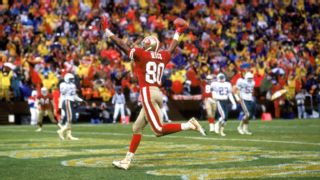 Second place: 1996This class took a leap forward in 2018 when Terrell Owens was enshrined in Canton, giving them a second Hall of Famer alongside Marvin Harrison. Both Harrison and Owens have complicated legacies for different reasons, but they combined for 14 Pro Bowl appearances and still each rank in the top 10 in career receiving yards. The guys in this class simply lasted a long time. There were six wideouts from the Class of 1996 -- Owens, Harrison, Keyshawn Johnson, Eric Moulds, Amani Toomer and Muhsin Muhammad -- who started for 10 or more seasons in the NFL. Only one other class since 1970 managed to produce more than two 10-year starters, and that's our first-place draft class, which managed only three. I think the top of that group is higher, which is why it's No. 1, but you could easily swap these two. First place: 1988The Hall of Famers in this class require little introduction: it's hard to argue against Tim Brown and Michael Irvin as two of the best wideouts of their respective eras. The second tier includes a pair of five-time Pro Bowlers, Anthony Miller and Sterling Sharpe, the latter of whom was on a Hall of Fame trajectory before suffering a career-ending neck injury. Given that Terrell Davis just made the Hall of Fame for a relatively short peak, Sharpe's seven-year career -- which included four top-three finishes in terms of fantasy production at wideout -- might deserve further Hall consideration in its own right. That's a strong top four, and even beyond those stars, 10 different receivers from the 1988 draft started at least five seasons as a pro, including notables like Brian Blades, Brett Perriman and Michael Haynes. The only other year with 10 such players was 1996. Rice is better than any individual wideout from this group, but the sheer depth of this class pushes them into the top spot.  Class to watch: 2010Injuries took a toll on this class last year, as Demaryius Thomas, Dez Bryant and Emmanuel Sanders all tore Achilles tendons weeks apart from one another. Antonio Brown, the best wideout from the group, also manufactured a trade to Oakland, which won't help his Hall of Fame stock, and Golden Tate moved to the Giants to catch passes from Eli Manning. This class ranked out as seventh all time without projecting anybody as a Hall of Famer, but it probably needs Brown to keep things up for a few more years and a long second act from someone like Thomas or Tate to create an unlikely second Hall of Famer and move into the top four. Worst class: 1997One year after the second-best wideout class in history, the 1997 draft delivered an absolute stinker. It wasn't for lack of pedigree, either; teams used four first-round picks and seven of the top 53 picks on wideouts. The best of those wideouts was Ike Hilliard, who was drafted with the seventh pick and racked up 6,397 yards over 12 seasons, more than the other six guys combined. The first-rounders include Yatil Green, who missed his first two seasons because of a pair of ACL tears, and Rae Carruth, who was convicted of conspiring to murder his girlfriend during his third season in the NFL.
TIGHT ENDThird place: 1997Tight end classes are relatively thin, so one Hall of Famer goes a long way to pushing a class up the rankings. When you have a 14-time Pro Bowler leading the way, Tony Gonzalez is enough to all-but-single-handedly make the 1997 class legendary. His longevity pushes this one-man class over similar groups like 2003 (Jason Witten) and 1979 (Kellen Winslow). Second place: 1978The first tight end taken in this class was seventh overall pick Ken MacAfee, who lasted only two seasons before the 49ers tried to convert him to guard, at which point MacAfee left to pursue dentistry. The 23rd pick was slightly more productive, as Ozzie Newsome might be one of the few human beings alive who deserves to make the Hall of Fame as a player and as an executive. The Cowboys then chose five-time Pro Bowler Todd Christensen in the second round, although the H-back never played a regular-season down in Dallas.  First place: 2010It's already there. If we assume that Rob Gronkowski is going to be a Hall of Famer in five years, this is the second-best tight end class of all time. It'll pip the 1978 class if Jimmy Graham and Ed Dickson start for their respective teams this season, and Graham himself might have an outside shot at the Hall of Fame if he can piece together a couple of more Pro Bowl campaigns in his 30s. Class to watch: 2013Now that Gronk is retired, the top two tight ends in football might be Zach Ertz and Travis Kelce, each of whom were taken in the middle rounds of the 2013 draft. Jordan Reed and Tyler Eifert might also still have productive seasons to come, although health has obviously been an issue for both. Worst class: 1971According to pro-football-reference, only one tight end -- Buffalo's Jan White -- was taken before the 80th selection of the draft. Fifth-rounder Bob Moore was the only tight end of the class to start more than two seasons as a pro.
OFFENSIVE LINEThird place: 1994As is the case for wide receivers, the buy-in for consideration here is a minimum of two Hall of Famers. Unlike the wideout classes, though, the groups here tend to have a huge drop-off from those two Hall of Famers to the rest of the bunch. The 1994 roster would feature one of the most devastating -- and versatile -- interiors in modern league history. Center Kevin Mawae started his career at right guard before spending 14 years at the pivot for the Seahawks, Jets and Titans. He ranks as one of the best free-agent signings in league history for the Jets, who don't exactly have a great track record on the interior. Mawae is joined by massive Cowboys and 49ers lineman Larry Allen, who played everywhere besides center during his 14-year career and might rate as the most terrifying athlete along the line in league history. After that, though, there's a drop-off: the starting five would include guys like Todd Steussie, Wayne Gandy and Tre' Johnson, who were closer to solid starters than stars. 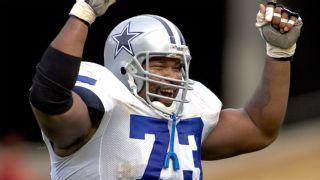 Second place: 1980The turn-of-the-decade line starts with Bengals stalwart Anthony Munoz, who might be the best offensive lineman in league history. He slots in at left tackle, and Dolphins Hall of Famer Dwight Stephenson sneaks ahead of six-time Pro Bowler Ray Donaldson as part of the best center class in league history. The most notable member of this line is otherwise longtime Steelers right tackle Tunch Ilkin. First place: 1973The best guard duo from a single draft class in league history, meanwhile, consists of Hall of Famers John Hannah and Joe DeLamielleure. Hannah probably was the best draft pick in Patriots history before Tom Brady. This team can piece together a whole line of Pro Bowlers with center Larry McCarren and tackles Jerry Sisemore and Leon Gray, the latter of whom was Hannah's longtime teammate in New England. Class to watch: 2010Offensive line is badly underrepresented in Canton, but there's a pair of Hall of Fame candidates from this class in Washington tackle Trent Williams and Steelers center Maurkice Pouncey. You could form a deep line with Russell Okung, Rodger Saffold and Mike Iupati, although the latter has declined badly since leaving San Francisco. Worst class: 1991The NFL chose 57 offensive linemen in the 1991 draft, including four first-rounders, four second-rounders and six third-rounders. Exactly one of those 57 linemen made it to the Pro Bowl: Cowboys tackle Erik Williams, a third-round pick who wasn't even Dallas' first offensive line selection in that draft. (former coach Jimmy Johnson chose James Richards seven picks before Williams, but the Cal product didn't even make the roster out of camp.)
DEFENSIVE LINEThird place: 2011This seemed as it were on pace to become the best pass-rushing class in NFL history, but stars like Aldon Smith, Muhammad Wilkerson and Robert Quinn have fallen off after great starts to their careers for various reasons. Even with that in mind, you can build a devastating front four from the guys who are still playing at a high level. It all starts with future Hall of Famer J.J. Watt at defensive end, and you can pick between Cameron Jordan and Ryan Kerrigan on the other side of the line. On the interior, the Class of 2011 can start Jurrell Casey and push Steelers end Cameron Heyward in to defensive tackle for an absolutely terrifying front four. This doesn't even include Von Miller or Justin Houston, who are treated as linebackers for the purposes of this list. 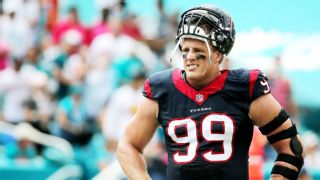 Second place: 1985This is a three-person line, but it's an awful good three-person line. At defensive end, the Class of 1985 sports Bruce Smith and Chris Doleman, who rank first (Smith, 200) and fifth (Doleman, 150.5) in career sacks. Between them is five-time Pro Bowler Ray Childress. There's a big drop-off for the rest of the class, but let's throw in William "Refrigerator" Perry as a run-plugger and goal-line back. First place: 1975This class predates official sack statistics, but it features another pair of Hall of Famers, Cowboys tackle Randy White and Chargers/49ers end Fred Dean. Keep in mind that once the NFL started tracking sacks, Dean racked up 17.5 of them during his ninth season in 1983. The line also features four other first-team All-Pros, Louie Kelcher, Gary Johnson, Doug English and Cleveland Elam. Class to watch: 2011You can't count on Smith or Quinn to return to form, but Jordan has played like a Defensive Player of the Year candidate over the past couple of seasons and could very well be on a Hall of Fame trajectory if he keeps this up. With Watt, Miller, Patrick Peterson and Richard Sherman, Jordan could give this class a fifth Hall of Famer. Worst class: 1982Despite the fact that the first overall pick in the 1982 draft was defensive end Kenneth Sims and 10 of the first 54 picks in the draft were defensive linemen, not a single member of this draft class made it to a Pro Bowl. The only lineman who started more than seven seasons in the league was Seahawks end Jeff Bryant.
LINEBACKERThird place: 1996This group starts with a Hall of Fame linebacker from the AFC North in Ray Lewis. Zach Thomas, who made seven Pro Bowls for the Dolphins, probably belongs in the Hall of Fame himself. The third linebacker in this bunch isn't clear, but you can pick between Patriots stalwart Tedy Bruschi or longtime Chiefs and Chargers linebacker Donnie Edwards to fill out the bunch.  Second place: 1974Déjà vu. Another member of the legendary Steelers draft class of 1974 paces this group, as Jack Lambert is the lone Hall of Fame linebacker here. He's joined by seven-time Pro Bowler Randy Gradishar, who is one of the best players in NFL history outside of Canton. Throw in Matt Blair, who made six consecutive Pro Bowls for the Vikings from 1977 to 1982, and you have the best linebacking draft of the '70s. The presence of a third Hall of Fame candidate pushes 1974 ahead of 1996. First place: 1981This is arguably the biggest no-brainer at any of these positional groups. The second- and third-placed classes have one no-brainer Hall of Famer. The class of 1981 has two in Lawrence Taylor and Mike Singletary, then added a third Hall of Famer when star Saints edge rusher Rickey Jackson made it to Canton in 2010. This might be the best class in league history without Taylor, and he's arguably the most important defensive player of the past 40 years. Pretty good.  Class to watch: 2012The 2011 class has Miller and Houston, but the 2012 class has a better shot at delivering two Hall of Famers with inside linebackers Luke Kuechly and Bobby Wagner. Throw in Bucs outside linebacker Lavonte David and you would have the rangiest trio of cover linebackers the league has ever seen. Worst class: 2001The linebackers of 2001 combined to make only two Pro Bowls, and they came from first-round picks Dan Morgan and Kendrell Bell, each of whom failed to make it to a sixth season as a starter. In fact, the only linebacker from this class to start more than five seasons for his team was Dolphins and Texans 'backer Morlon Greenwood.
DEFENSIVE BACKThird place: 2003This class probably will yield only one Hall of Famer, Troy Polamalu, but 11 different defensive backs made it to the Pro Bowl, the most of any draft class since the merger. There might not be a Hall of Famer in the bunch at corner, but you could build a devastating secondary with Charles Tillman, Nnamdi Asomugha, Asante Samuel, Terence Newman and Marcus Trufant. Second place: 1983This group is more about longevity at a high level than anything else. It's the only secondary class since the merger with five defensive backs who started at least 10 seasons, led by longtime Washington corner and Hall of Famer Darrell Green. The class can boast Gill Byrd, Albert Lewis, Lionel Washington and Carl Lee at corner across from Green, with Vikings star Joey Browner and Dave Duerson at safety. 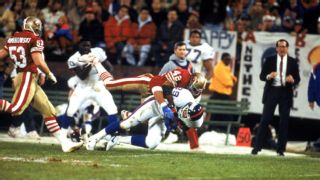 First place: 1981This secondary starts with 49ers safety Ronnie Lott, who forms a Hall of Fame duo alongside Kenny Easley of the Seahawks. Throw in six-time Pro Bowler Dennis Smith, and this is the best safety class in league history. This class isn't quite as deep at cornerback, but it call still run out a pair of former first-team All-Pros in Hanford Dixon and Eric Wright. Class to watch: 2010If you want a pair of safeties to challenge Lott and Easley, you could do worse than Eric Berry and Earl Thomas, although they've certainly had trouble staying healthy over the past few seasons. This class even has Devin McCourty, Reshad Jones and Kam Chancellor in reserve at safety. Corner isn't quite as impressive, with Joe Haden the only active member of this class to make a Pro Bowl. Worst class: 1979None of the 47 members of this draft class made a Pro Bowl. It wasn't a great class for defensive backs given that only one went in the first round, but a mere three defensive backs started more than four seasons, and none were drafted before the sixth round.
BEST OVERALL CLASSESThird place: 1996The Keyshawn Johnson-led class has five confirmed Hall of Famers in Harrison, Lewis, Owens, Brian Dawkins and Jonathan Ogden. It could very well justify a sixth, Zach Thomas, and Eddie George and Willie Anderson are long shots who might eventually make it. There's a decent-sized gap between this and the top two drafts, which each have seven Hall of Famers. Second place: 1981Could you build a defense with LT, Singletary, Lott, Jackson, Easley and Howie Long? That's six defensive Hall of Famers, and you can throw in an offensive lineman with legendary Washington guard Russ Grimm. Dennis Smith might deserve to make it as a six-time Pro Bowler, which would add another honor to the best defensive draft in modern league history. First place: 1983We started talking about the class of 1983, and we finish talking about the class of 1983. There are seven Hall of Famers, too, but with three quarterbacks in the bunch, this is a more valuable class given the positional scarcity. There's one of the best running backs in league history in Dickerson, an all-time interior lineman and a member of one of the league's most famous families in Bruce Matthews, and a pair of defensive stars in Darrell Green and Richard Dent. There's even a trio of veterans who probably deserve to make it to Canton in Browner and former Broncos draftees Chris Hinton and Karl Mecklenburg. It's incredible to think that we could end up with as many as 10 Hall of Famers from this class one day. 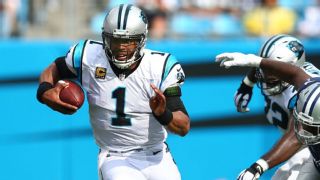 Class to watch: 2011It's still way too early to say, of course, but there are four virtually surefire Hall of Famers based on what they've done already in Watt, Miller, Peterson and Sherman. On offense, you would figure that A.J. Green and Julio Jones are on pace to get in, which would get this class to six Hall of Famers. We haven't even gotten to Cam Newton, who has an MVP trophy in his cabinet, and Tyron Smith, who has six consecutive Pro Bowl appearances to his name. Worst class: 1984Funny how that works, huh? This is one of only two classes from 1970 to 2006 that has failed to produce a Hall of Famer. The 1992 class has one three-time first-team All-Pro in Cowboys safety Darren Woodson. The 1984 class doesn't even sport that level of player. The best players from this class are guys like Wilber Marshall and Boomer Esiason, who don't appear to be close to serious Hall of Fame consideration and who would rate as the 14th- and 15th-best players of the 1983 class. Ten of the 28 first-round picks failed to start even three seasons as a pro. After the bountiful crop of 1983, 1984 amounted to leftovers.
|

